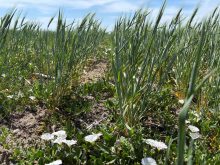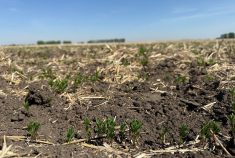Agrifood firms unable to source enough grain domestically due to last year’s drought have imported a record amount through a major St. Lawrence River grain terminal this year.
Winnipeg grain handler G3, whose grain terminal at Trois-Rivieres, Que. has storage capacity for 109,000 tonnes, reported Wednesday the terminal has so far unloaded over 160,000 tonnes of imported grain from incoming ships in 2022.
That total marks “far more than the facility has ever handled in one year,” the company said in a release.
The Trois-Rivieres site — like G3’s three other port terminals in Eastern Canada — is focused mainly on loading ships with grain for export. However, G3 said Wednesday, it’s also the only port facility in the Great Lakes-St. Lawrence Seaway system able to unload grain from Panamax-class bulk ships and transfer it onto trucks, trains or smaller laker vessels.
Read Also

U.S. livestock: CME cattle tick lower in thin pre-holiday trade
Chicago | Reuters – Chicago Mercantile Exchange live and feeder cattle futures were little changed but ended slightly lower on…
Included in the 160,000-tonne total so far this year were 30,000 tonnes of inbound grain just recently unloaded from a single vessel, sent to Canada from an overseas supplier, G3 said.
The jump in demand for inbound grain is “due to a shortage of some crops caused by drought last year in Western Canada,” G3 said.
Given the supply situation, G3 CEO Don Chapman said the company is providing “important capacity to import grain when needed.”
The Trois-Rivieres facility has been operating “around the clock” to handle the increased imports, the company said, while still receiving “thousands of truckloads” of corn, soybeans and other crops from Quebec growers to load on outbound vessels for export.
The Trois-Rivieres terminal, formerly known as Les Elevateurs des Trois-Rivieres (ETR), came to G3 in 2013, when the company, then known as CWB, bought the port terminal assets of Toronto’s Upper Lakes Group.
ETR’s annual grain throughput at that time was estimated at around six million tonnes. The site has 35 feet of water at its berth, thus allowing it to handle inbound and outbound ocean-class bulk vessels loaded to deeper drafts. — Glacier FarmMedia Network
















